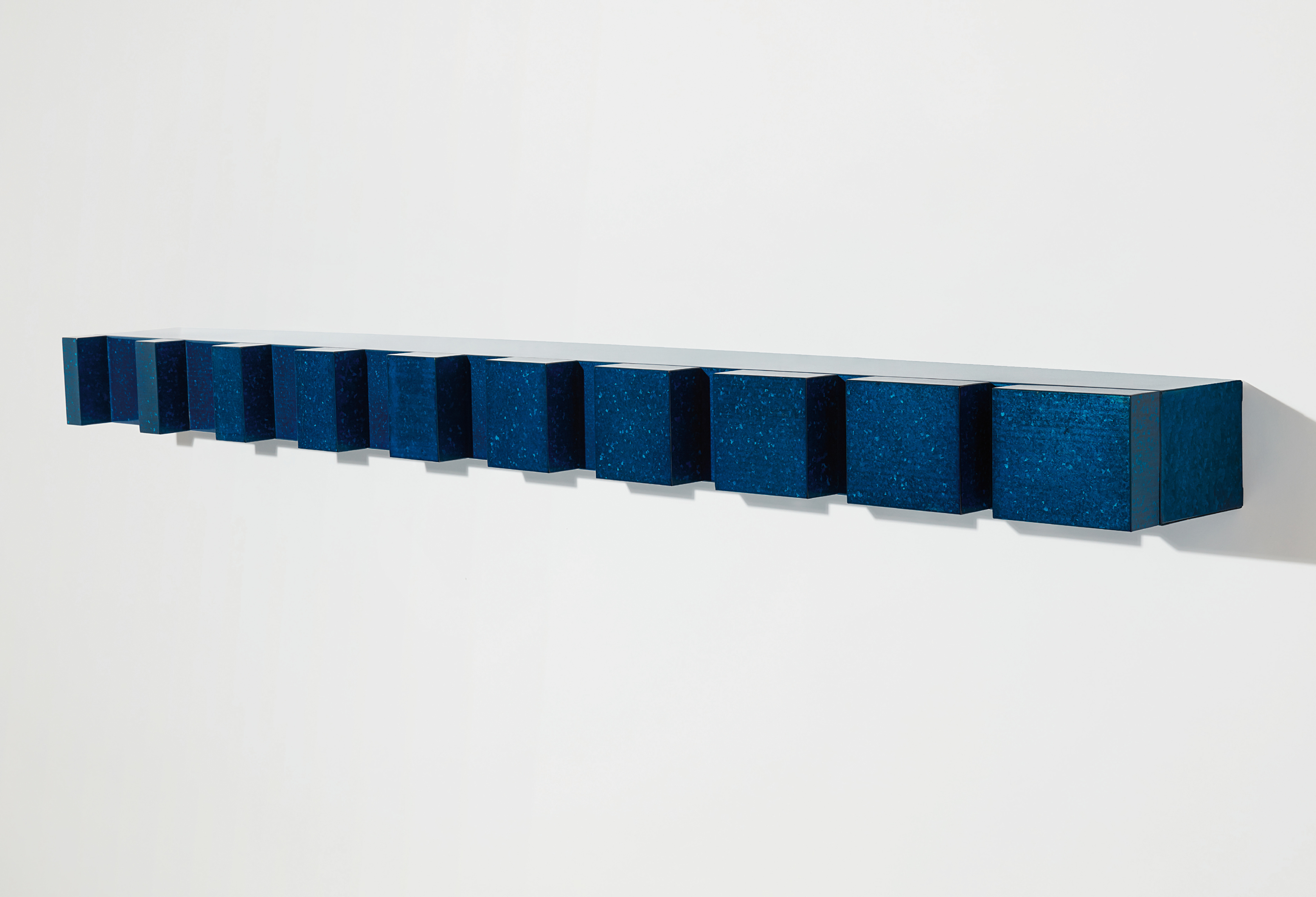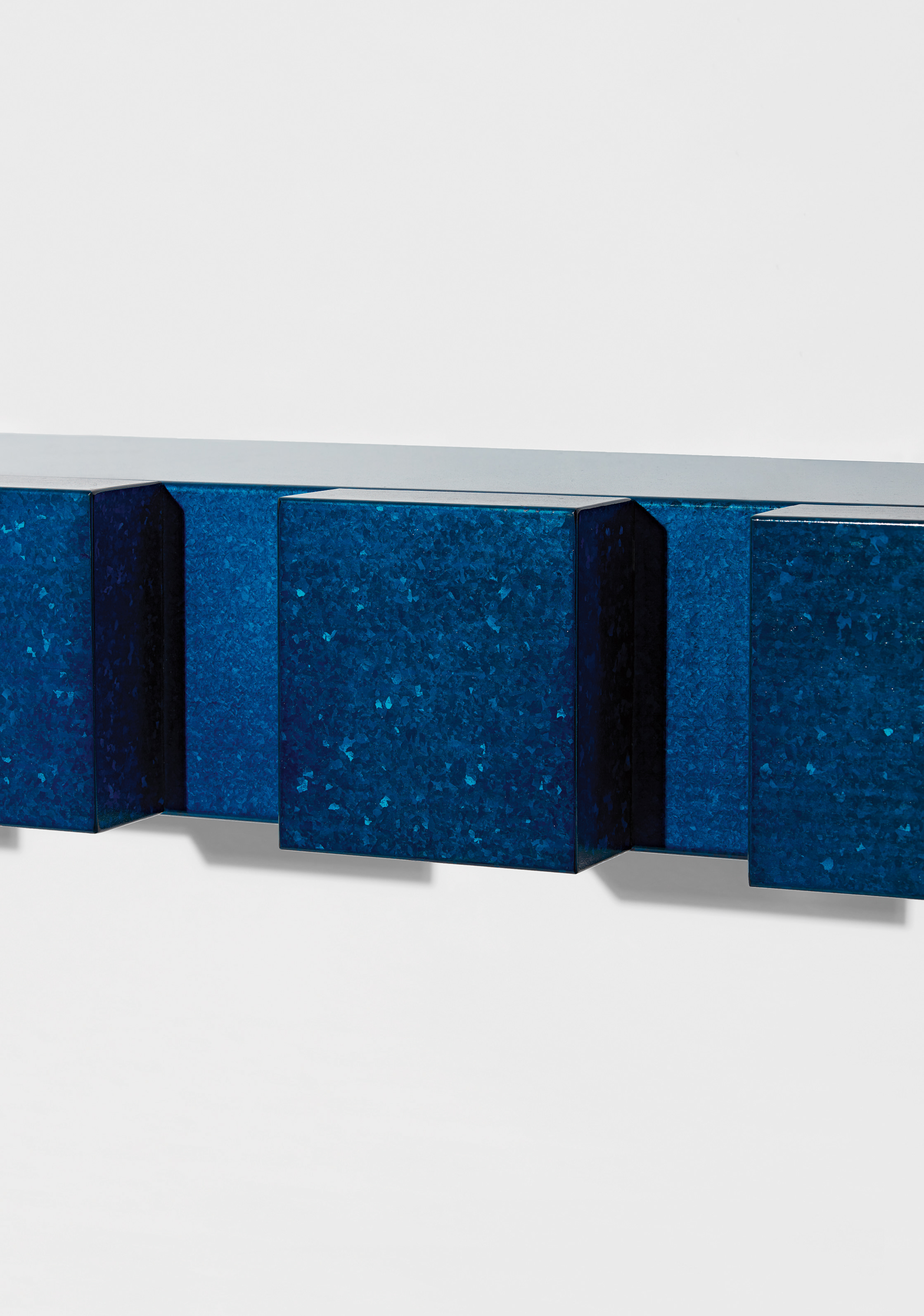



26
Donald Judd
Untitled
Full-Cataloguing
In his 1965 essay “Specific Objects,” Judd explored the definition of art that is neither painting nor sculpture. Departing from his exploration into abstract painting of the early 1960s, Judd instead decided to pursue a distinct physical surface. By 1961 with the creation of his famous black painting, which holds a small, tin, baking pan in the center (Untitled in the Collection of the Museum of Modern Art, New York), his paintings shifted towards the three dimensional, which he describes “objects in their own right.” This leap away from the tradition of painting led Judd to create objects like Untitled, rendered in his earliest, preferred medium of galvanized iron, the only metal which possesses an intrinsic natural pattern and the same material in which he would later execute his earliest vertical stacks. Coated in a blue lacquer, the natural grain of the iron in Untitled gives the surface an almost dappled effect as the blue paint interacts with the iron’s texture. Indeed, Judd was riveted by color theory, himself owning multiple copies of Josef Albers’ revolutionary publication, Interaction of Color. Seeking colors that highlighted the edges of his work, Judd’s choice of blue lacquer draws an art historical reference to the color and composition of Ad Reinhardt's Blue Paintings for the early 1950s. And yet the format of his progressions, which hold forms that gradually increase as the corresponding voids progressively decrease, allowed Judd an infinite opportunity to alter the length, frontal shape and coloration of his progressions with different colors and surfaces. Untitled is a supreme example from a series which would come to define Judd as the most iconic and innovative sculptor of the 20th century.
Donald Judd
American | B. 1928 D. 1994Donald Judd came to critical acclaim in the 1960s with his simple, yet revolutionary, three-dimensional floor and wall objects made from new industrial materials, such as anodized aluminum, plywood and Plexiglas, which had no precedent in the visual arts. His oeuvre is characterized by the central constitutive elements of color, material and space. Rejecting the illusionism of painting and seeking an aesthetic freed from metaphorical associations, Judd sought to explore the relationship between art object, viewer and surrounding space with his so-called "specific objects." From the outset of his three-decade-long career, Judd delegated the fabrication to specialized technicians. Though associated with the minimalist movement, Judd did not wish to confine his practice to this categorization.
Inspired by architecture, the artist also designed and produced his own furniture, predominantly in wood, and eventually hired a diverse team of carpenters late in his career.